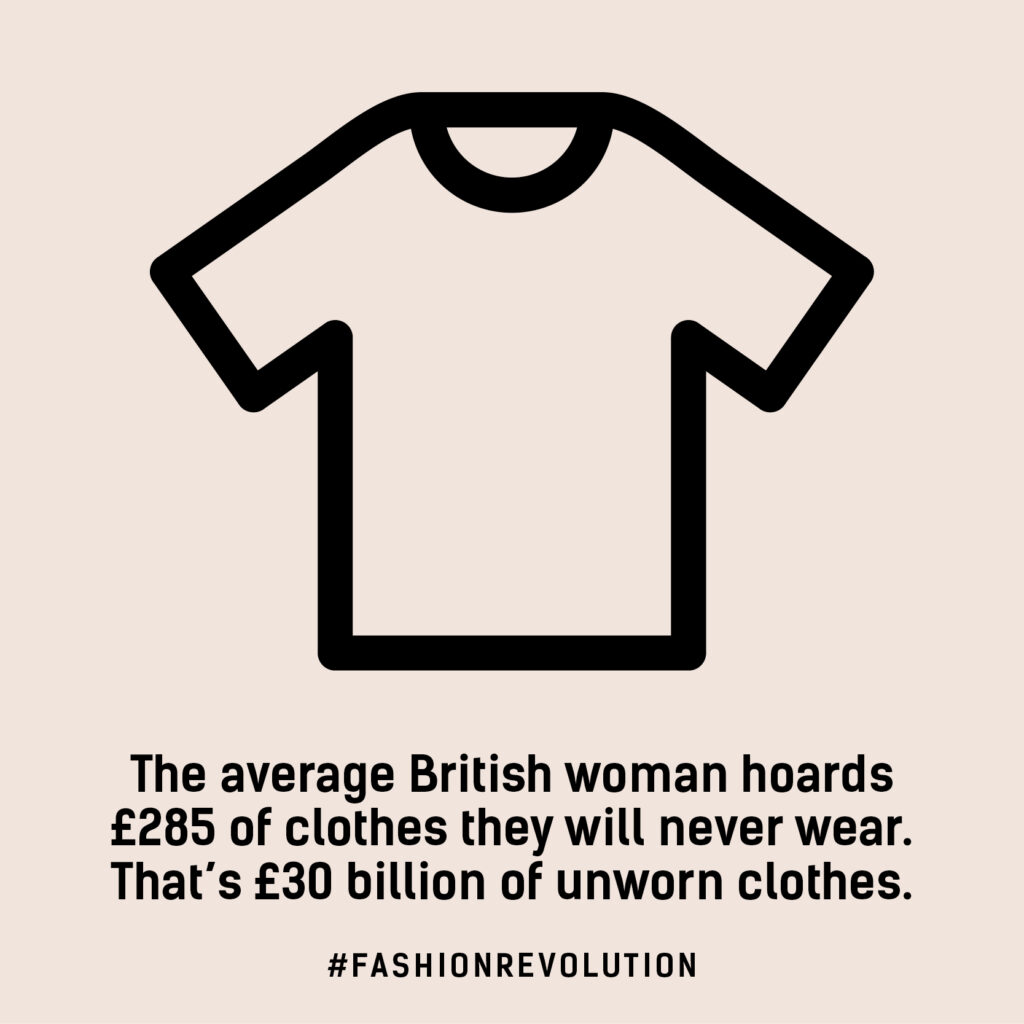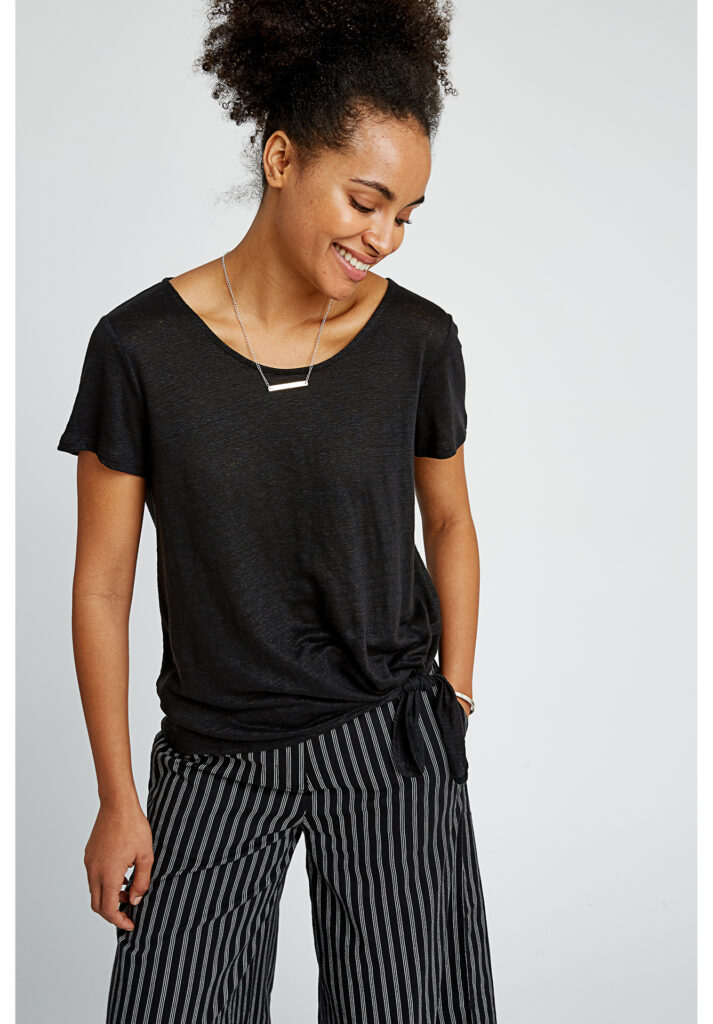
“Today’s textile industry is built on an outdated linear, take-make-dispose model and is hugely wasteful and polluting” Ellen MacArthur
Most of us will remember the terrible tragedy when the Rana Plaza factory collapsed in 2013 killing over 1,100 people. This was a wake-up call for the fashion industry that was long overdue. Fashion Revolution was born on the day of the accident – 24 April 2013 and each year Fashion Revolution Week encourages brands and producers to respond with the hashtag #imadeyourclothes and to demonstrate transparency in their supply chain.

People Tree producer
The fashion industry is global and clothes are mainly produced in poorer countries to satisfy the increasing demands of the richer western world. Our clothes are generally made by young women in appalling conditions for pay that does not meet basic needs. In Bangladesh garment workers earn £44 per month – just ¼ of a living wage.
‘Fast’ fashion has created one of the highest environmental impacts on the planet with increasing water use, pollution from chemicals and waste clothing lines disposed of in landfill.
Did you know?

- Total greenhouse gas emissions for the fashion industry are around 1.2 billion tonnes of CO2 – this is greater than emissions from all international flights and shipping combined.
- Making a pair of jeans produces more greenhouse gases than driving a car 80 miles.
- Discarded clothing made of non-biodegradable fabrics can sit in landfills for up to 200 years.
- It takes over 700 gallons of water to make one cotton shirt which is enough to meet the average person’s drinking needs for two and a half years.
- Around one third of all micro plastics in the ocean originate from textiles and clothing.
- Conventionally grown cotton takes 25% of the world’s insecticides and 10% of the world’s pesticides to produce.
- Less than 1% of material used to produce clothing is recycled into new clothing.
So what can be done?
The fashion industry is in a mess and needs a whole new system of working. The Ellen MacArthur Foundation (2017) has suggested four really helpful ways we can ensure a more sustainable future for fashion:
Phase out substances of concern & microfibre release
This means the industry needs to remove polluting inputs such as dyes and additives and prevent microfibres from entering our water systems. We can all try to buy more clothes made of natural materials and avoid man-made fibres.
Transform the way clothes are designed, sold, and used
This will help to break free from their increasingly disposable nature – there are a number of ways this can work:
- Scale up short-term clothing rentals – this could be great for children’s clothes and event fashion.
- Make durability more attractive – many of us would pay more for higher quality clothing that we could enjoy wearing for longer. This may include better quality fabrics with good environmental credentials such as organic cotton, hemp and linen. Vintage clothes and other branded resale options are also more sustainable. Sites such as www.depop.com have great creative ideas.
- Increase clothing utilisation further through brand commitments and policy – brands should be encouraged to change their approach to sustainability and prioritise production methods and fabrics that create long life clothing.
Radically improve recycling by transforming clothing design, collection, and reprocessing
This means that we need to consider recycling before clothes are designed to ensure that materials and production all take account of recycling needs. Recycling our clothes is simple and should be a regular activity. When you buy clothes think about these new ones as replacements for others and go through your wardrobe picking out used clothes to recycle.
Make effective use of resources and move to renewable inputs
In the future, our clothes will need to be made from old ones that have been recycled with very little virgin material added. Efficient production processes are needed that generate less waste (such as offcuts), need fewer inputs of resources, such as fossil fuels and chemicals, reduce water use in water-scarce regions, are energy efficient, and run on renewable energy.
What should we look for?
More niche sustainable fashion retailers are emerging that consider the social and environmental aspects of clothing at the forefront of their business. Harpers Bazaar reviews some of the cutting edge eco fashion brands here https://www.harpersbazaar.com/uk/fashion/what-to-wear/g19491797/the-best-and-still-chic-sustainable-brands/. Mainstream retailers are also responding to the challenge – ASOS has the new ‘eco edit’ and H&M have brought in lines made from organic cotton.

People Tree was one of the earliest eco fashion brands to become prominent and it is still the only brand in the world to receive the Ethical Trade Board award (2013). This month we interview People Tree in the Greenscents newsletter to find out more more about this pioneering company. Sign up to receive ‘My Healthy Home’, our ethical newsletter here
Caring for our clothes & the environment
Although organic cotton only represents about 1% of all cotton production it is becoming more available and is the best option for sustainable shoppers.
“By eliminating the use of synthetic pesticides and fertilisers, organic cotton keeps waterways and drinking water safe and clean. The water pollution impact of organic has been shown to be 98% less than non-organic cotton production” (Soil Association, 2019).
Check out http://www.cottonedon.org which explains why organic cotton is so important and lists clothing and textile stockists. Look for the GOTS label which is the highest certification for sustainable fabrics.

25% of the carbon footprint of clothing is down to how you care for it. This means the decisions you make about which laundry products you use have a big impact on the sustainability of your clothes. Greenscents organic laundry liquids and fabric conditioners are natural partners to organic fabrics and have a lower carbon footprint than conventional products. All Greenscents products are certified organic which means that their ingredients are produced in a sustainable way without synthetic fertilisers or pesticides. If you are a regular Greenscents customer you will know that all Greenscents products are super-concentrated which means that transport costs are lower and less packaging materials are needed. Greenscents Laundry Liquid is great for low temperature washes and keeps your clothes clean & fresh.


